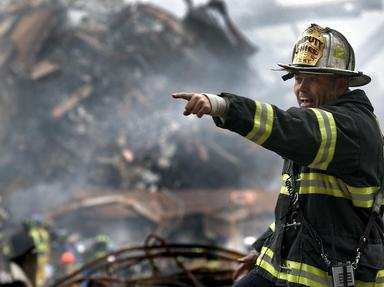Quiz Answer Key and Fun Facts
1. During this earthquake and fire, tenor Enrico Caruso was heard singing among the ruins. He vowed never to return to this city, a vow he kept. It occurred in 1906. Where did it happen?
2. On April 26, 1986, a nuclear reactor in this country exploded, releasing radioactive material into the atmosphere. The resulting cover up contributed to the disaster. Where did this occur?
3. An American plant in this country developed a leak in the early morning hours of December 3, 1984 causing a gas to be released into the atmosphere killing an unofficial estimated 8,000 victims or more. Where did this happen?
4. During the years of 1918-1919, some 20 million victims of this dreadful disease were infected. Approximately 12 million people in India and 550,000 in America were killed. What was the cause of this pandemic?
5. On September 18, 1985 this capital city was devasted by a massive earthquake registering 8.1 on the Richter scale. 36 hours later another earthquake registering 7.5 struck the same city. What was this thoroughly devastated city?
6. This famous city was buried by a volcano eruption on August 24-27 79 AD claiming an estimated 16,000-24,000 lives. It is probably the best known disaster of its kind since excavation started in the 18th century. Name this unfortunate town.
7. Mount Vesuvius is Italy's most active volcano.
8. On August 27, 1883 the Indonesian island of Krakatoa(Krakatau) exploded with the biggest bang in recorded history. Krakatoa is east of Java. True or false?
9. On the island of Martinique in the West Indies, a volcano named Mont Pelee on May 8, 1902 intervened in a political race. What did it do?
10. This eruption was one of the most widely publicized in history. Not only was there recorded video of the eruption that occured on May 18, 1980 but some of the victims were the scientific study teams. What was the name of this previously dormant killer?
11. One of Italy's worst disasters occured when this city was deluged by torrential rains, resulting in 19 inches of rain falling in only two days in November 1966. Several magnificent art treasures were ruined and a small army of experts descended on the town to restore them. Which city was it?
12. In July 1926 the US Navy's Lake Denmark Naval Ammunition Depot and the Army's Picatinny Arsenel near Dover, New Jersey where nearly 30% of all the US's munitions was stored was destroyed by a huge blast and fire. What caused this massive explosion?
13. On December 8, 1963, Pan American Airlines Clipper Flight 214 crashed with the loss of 81 on board near Philadelphia, Pennsylvania. What caused the loss of this airplane?
14. 1816 - the "year without a summer" was caused by freak winds and weather patterns.
15. London has had its own particular menace with its killer fogs, with the worst occuring in December 1952. The air, thick with coal smoke from industry, caused approximately how many deaths while the fog persisted?
16. The worst loss of life from a major hurricane in the US occured on September 8, 1900 when some 6,000 died. What city did this occur?
17. One of the worst typhoons in history occured on September 26-27, 1959. The resulting dead numbered around 5000 and more than 32,000 injured. What country did this occur in?
18. The Titanic was the worst shipwreck in American history.
19. The Bubonic Plague, or "Black Death", killed approximately 75 million people worldwide during the period 1345-1350. How was the disease transmitted to humans?
20. Peru experienced its worst national disaster on May 31, 1970. Around 95,000 people lost their lives in combination of disasters. What were they?
21. A major cyclone ravaged much of this country in 1970, killing an estimated 300,000 to 500,000. Alarms of a major cyclone 3 weeks earlier had proved false, so most people ignored the threat even though the cyclone was well tracked. Where did this happen?
22. Cyclone Tracy hit this Australian city with winds up to 135 miles per hour on Christmas Day, 1974. After it passed, 9/10s of the city lay in ruins and 65 people were dead. What was this city?
23. On March 24, 1989 this ship carrying some 1.26 million barrels of oil ran aground off the coast of Alaska in Prince William Sound. Some 240,000 barrels of oil were released into the clear waters, causing an epic environmental diaster. What was the name of this ship?
24. On a small, single runway airport at Teneriffe on the Canary Islands, two airplanes met in a horrendous crash on March 27, 1977 causing the worst lost of life in a airplane crash. How many people died?
25. This most famous of shipwrecks occured on the night of April 14, 1912. The ship was of course the Titanic. Hundreds of books and stories have been told about her, including the story of the iceberg ripping a great gash in her side. But was this last detail true?
Source: Author
nikshijay
This quiz was reviewed by FunTrivia editor
bloomsby before going online.
Any errors found in FunTrivia content are routinely corrected through our feedback system.

